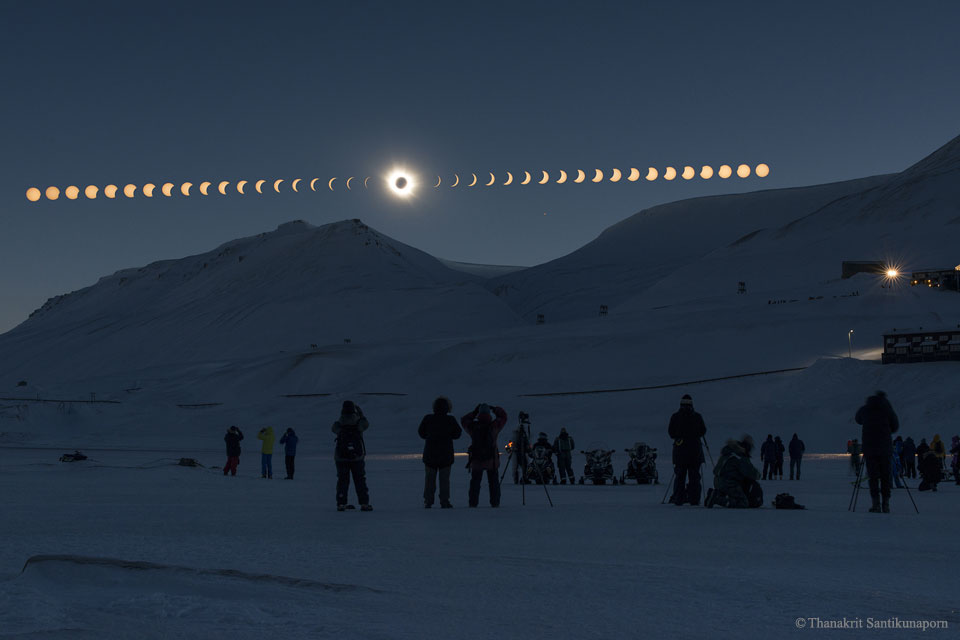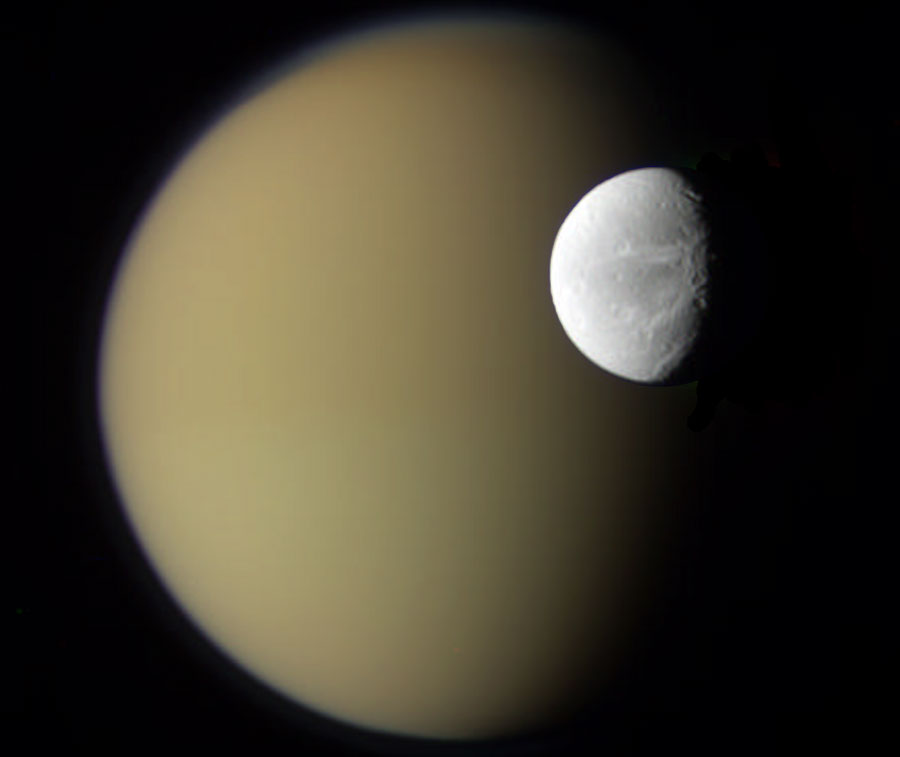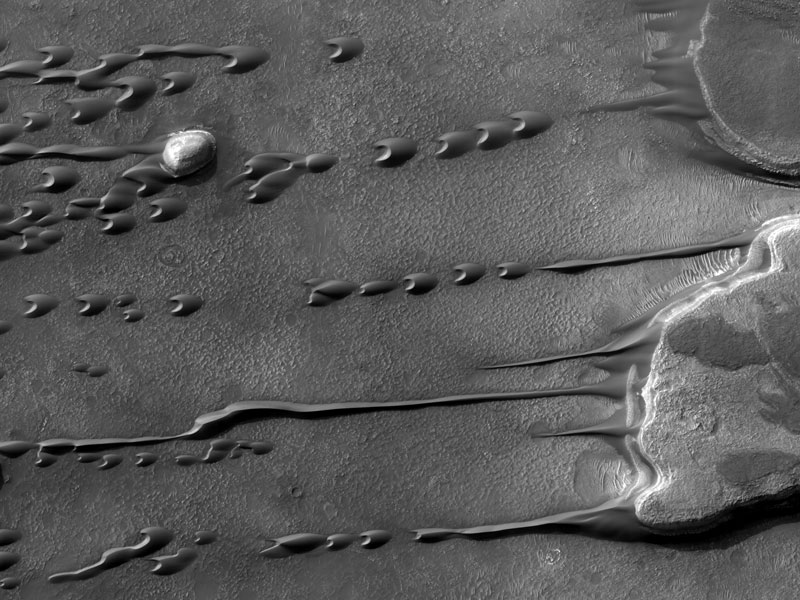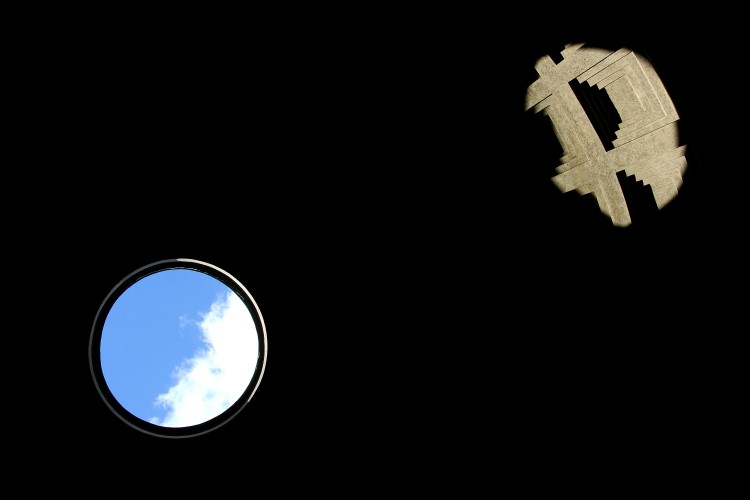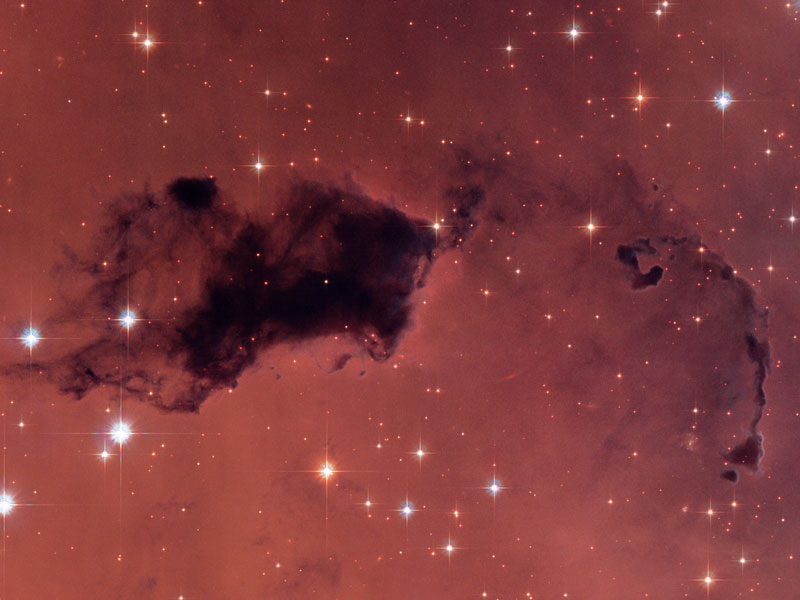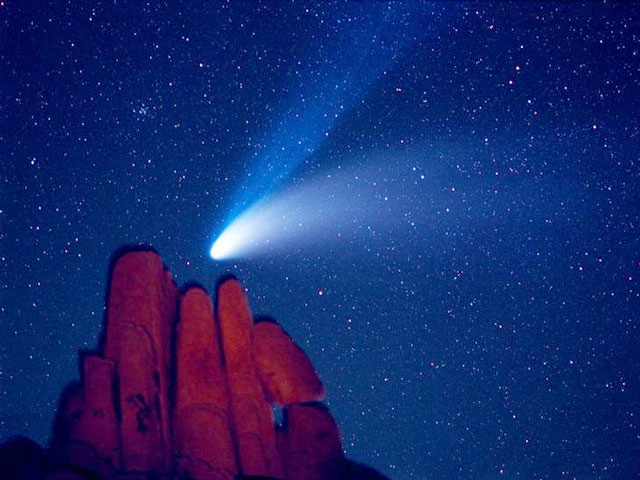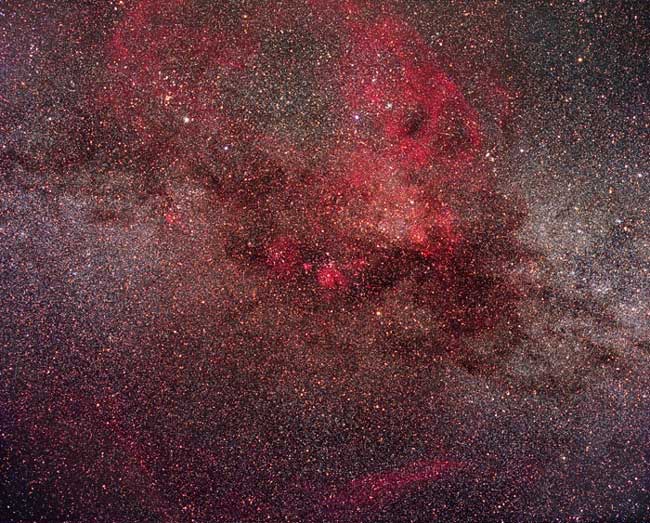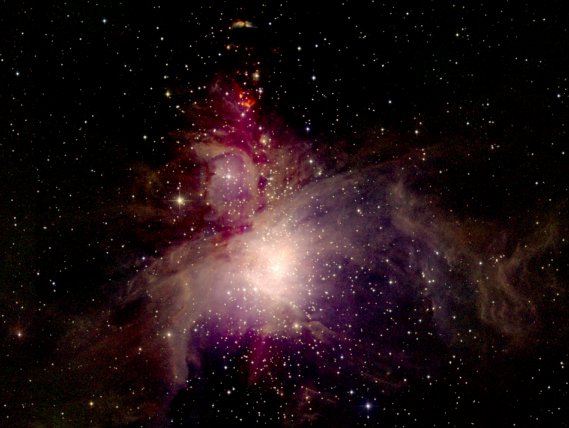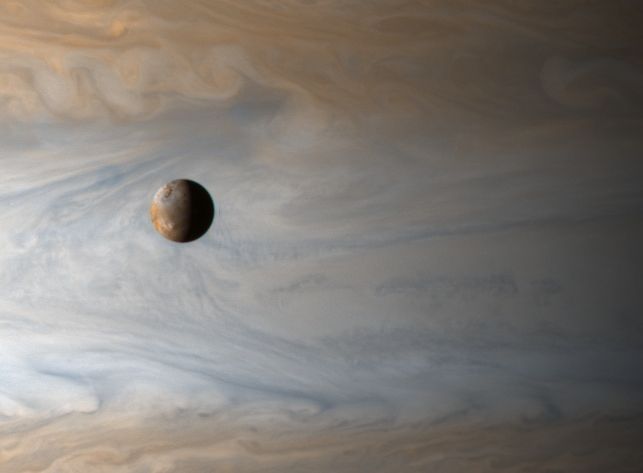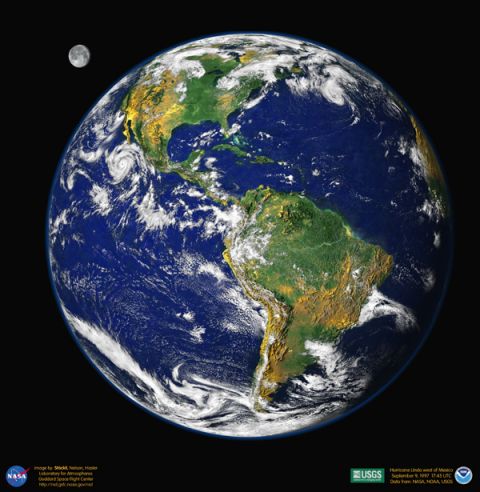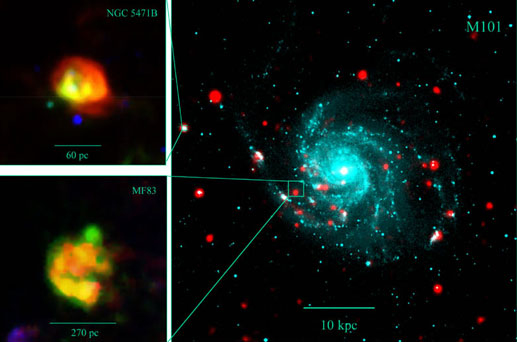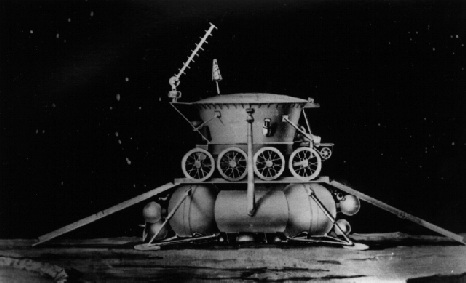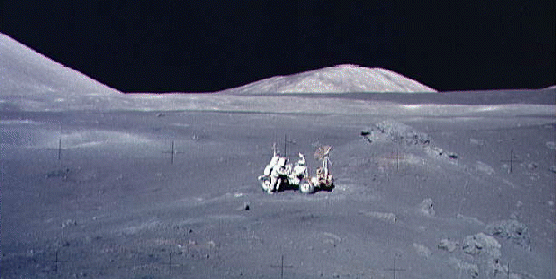APOD Retrospective: April 20
Posted: Fri Apr 20, 2012 3:32 am
| << Previous | Index | Next >> |
2015 Going, going, gone. That was the feeling in Svalbard, Norway last month during a total eclipse of the Sun by the Moon. In the featured image, the eclipse was captured every three minutes and then digitally merged with a foreground frame taken from the same location. Visible in the foreground are numerous gawking eclipse seekers, some deploying pretty sophisticated cameras. As the Moon and Sun moved together across the sky -- nearly horizontally from this far north -- an increasing fraction of the Sun appears covered by the Moon. In the central frame, the Moon's complete blockage of the disk of the Sun makes the immediate surroundings appear like night during the day. The exception is the Moon itself, which now appears surrounded by the expansive corona of the Sun. Of course, about 2.5 minutes later, the surface of the Sun began to reappear. The next total eclipse of the Sun will occur in 2016 March and be visible from Southeast Asia.
2014 Why did a picturesque 2010 volcanic eruption in Iceland create so much ash? Although the large ash plume was not unparalleled in its abundance, its location was particularly noticeable because it drifted across such well-populated areas. The Eyjafjallajökull volcano in southern Iceland began erupting on 2010 March 20, with a second eruption starting under the center of a small glacier on 2010 April 14. Neither eruption was unusually powerful. The second eruption, however, melted a large amount of glacial ice which then cooled and fragmented lava into gritty glass particles that were carried up with the rising volcanic plume. Pictured above during the second eruption, lightning bolts illuminate ash pouring out of the Eyjafjallajökull volcano.
2013 As far as the eye could see, it was a dark night at Las Campanas Observatory in the southern Atacama desert of Chile. But near local midnight on April 11, this mosaic of 3 minute long exposures revealed a green, unusually intense, atmospheric airglow stretching over thin clouds. Unlike aurorae powered by collisions with energetic charged particles and seen at high latitudes, the airglow is due to chemiluminescence, the production of light in a chemical reaction, and found around the globe. The chemical energy is provided by the Sun's extreme ultraviolet radiation. Like aurorae, the greenish hue of this airglow does originate at altitudes of 100 kilometers or so dominated by emission from excited oxygen atoms. The gegenschein, sunlight reflected by dust along the solar system's ecliptic plane was still visible on that night, a faint bluish cloud just right of picture center. At the far right, the Milky Way seems to rise from the mountain top perch of the Magellan telescopes. Left are the OGLE project and du Pont telescope domes.
2012
2011 As the Sun rose, a nearly full Moon set in this serene seaside vista captured last Monday from Rio de Janeiro, Brazil. In the foreground, the reddened early morning sunlight illuminates a stretch of South Atlantic coastline. Looking toward the west, a scene that is a familiar one to Rio's Ipanema beach goers, the favela Vidigal is nestled below the twin peaks of Morro Dois Irmãos (Two Brothers Hill). This well-composed multiple-exposure image recorded the steady progress of the dramatic moonset with a 6.5 minute gap between each frame. Flying from their nests at the break of dawn, all the ocean birds appear only in the last single frame.
2010 What would it be like to see a sky with many moons? Such is the sky above Saturn. When appearing close to each other, moons will show a similar phase. A view with two of the more famous moons of Saturn in gibbous phase was captured last month by the robot spacecraft Cassini now orbiting Saturn. Titan, on the left, is among the largest moons in the Solar System and is perpetually shrouded in clouds. In 2005, the Huygens probe landed on Titan and gave humanity its first view of its unusual surface. Dione, on the right, has less than a quarter of Titan's diameter and has no significant atmosphere. The above uncalibrated image was taken on April 10 after Cassini swooped by each moon the previous week.
2009 When does Mars act like a liquid? Although liquids freeze and evaporate quickly into the thin atmosphere of Mars, persistent winds may make large sand dunes appear to flow and even drip like a liquid. Visible on the above image right are two flat top mesas in southern Mars, where the season is changing from Spring to Summer. A light dome topped hill is also visible on the far left of the image. As winds blow from right to left, flowing sand on and around the hills leaves picturesque streaks. The dark arc-shaped droplets of fine sand are called barchans, and are the interplanetary cousins of similar Earth-based sand forms. Barchans can move intact downwind and can even appear to pass through each other. Over the past few weeks, winds on southern Mars have been kicking up dust and are being watched to see if they escalate into another of Mars' famous planet-scale sand storms.
2008 Billions of years from now, only one of these two galaxies will remain. Until then, spiral galaxies NGC 2207 and IC 2163 will slowly pull each other apart, creating tides of matter, sheets of shocked gas, lanes of dark dust, bursts of star formation, and streams of cast-away stars. Astronomers predict that NGC 2207, the larger galaxy on the left, will eventually incorporate IC 2163, the smaller galaxy on the right. In the most recent encounter that peaked 40 million years ago, the smaller galaxy is swinging around counter-clockwise, and is now slightly behind the larger galaxy. The space between stars is so vast that when galaxies collide, the stars in them usually do not collide.
2007 Could this be a picture of the Earth and Moon from space? It certainly looks like it at first glance, with a cratered Moon standing off from planet Earth's lovely blue disk surrounded by a nurturing atmosphere. In fact, this view looks up into the dome of the ancient Pantheon in Rome. The Earth's blue disk is really the daytime sky with clouds seen through a nine meter diameter central opening in the dome. The circular opening, or oculus, was intended as the source of light for the building's interior. The Moon is actually direct sunlight streaming through the oculus onto the dome's inner ribbed structure. Historian Soeren Dalsgaard snapped the evocative picture in February and comments that for almost two thousand years the rays of the Sun have traced a steady path on the inside of the Pantheon's cupola. A testament to Roman architecture and engineering, the Pantheon's dome is said to symbolize the vault of the heavens.
2006 Stars themselves can create huge and intricate dust sculptures from the dense and dark molecular clouds from which they are born. The tools the stars use to carve their detailed works are high energy light and fast stellar winds. The heat they generate evaporates the dark molecular dust as well as causing ambient hydrogen gas to disperse and glow red. Pictured above, a new open cluster of stars designated IC 1590 is nearing completion around the intricate interstellar mountain named NGC 281. The dust cloud NGC 281, dubbed the Pacman nebula because of its overall shape, is classified as a dense Bok Globule that lies about 10,000 light years distant.
2005 Why is the belt of Orion surrounded by a bubble? Although glowing like an emission nebula, the origin of the bubble, known as Barnard's Loop, is currently unknown. Progenitor hypotheses include the winds from bright Orion stars and the supernovas of stars long gone. Barnard's Loop is too faint to be identified with the unaided eye. The nebula was discovered only in 1895 by E. E. Barnard on long duration film exposures. Orion's belt is seen as the three bright stars across the center of the image, the upper two noticeably blue. Just to the right of the lowest star in Orion's belt is a slight indentation in an emission nebula that, when seen at higher magnification, resolves into the Horsehead Nebula. To the right of the belt stars is the bright, famous, and photogenic Orion Nebula.
2004 Comet Hale-Bopp, the Great Comet of 1997, was quite a sight. No comets of comparable brightness have graced the skies of Earth since then. During this next month, however, even besides the fleeting Comet Bradfield, two comets have a slight chance of rivaling Hale-Bopp and a good chance of putting on a memorable sky show. Unfortunately, most of the show will be confined to sky gazers in Earth's southern hemisphere. Both comets are already visible to the unaided eye from there. The first, Comet C/2002 T7 (LINEAR), should be at its best before dawn during the first weeks of May from the south. The second, Comet C/2001 Q4 (NEAT), should be visible in early May from all over the Earth. Both comets appear to be approaching the inner Solar System for the first time and so it is very hard to predict how bright each will become. In the above photograph taken 1997 April 6, Comet Hale-Bopp was imaged from the Indian Cove Campground in the Joshua Tree National Forest in California, USA. A flashlight was used to momentarily illuminate foreground rocks during this six minute exposure.
2003 Because the Gum Nebula is the closest supernova remnant, it is actually hard to see. Spanning 40 degrees across the sky, the nebula is so large and faint it is easily lost in the din of a bright and complex background. The Gum Nebula, highlighted nicely in the above wide angle photograph, is so close that we are much nearer the front edge than the back edge, each measuring 450 and 1500 light years respectively. The complex nebula lies in the direction of the constellations of Puppis and Vela. Oddly, much remains unknown about the Gum Nebula, including the timing and even number of supernova explosions that formed it.
2002 Few astronomical sights excite the imagination like the nearby stellar nursery known as the Orion Nebula. The Nebula's glowing gas surrounds hot young stars at the edge of an immense interstellar molecular cloud only 1,500 light-years away. This distinctively detailed image of the Orion Nebula was constructed using data from the 2 Micron All Sky Survey or 2MASS. Using telescopes in the Northern and Southern Hemispheres of planet Earth, the 2MASS project has mapped the entire sky in infrared light. The wavelength of infrared light is longer than visible light but more easily penetrates obscuring dust clouds. 2MASS cameras were sensitve to near infrared wavelengths around 2 microns or about 0.00008 inches. Visible light has a wavelength of about 0.00002 inches. Survey observations in three infrared bands were translated to blue, green, and red colors to produce this composite image.
2001 How big is the Jovian moon Io? The most volcanic body in the Solar System, Io (usually pronounced "EYE-oh") is 3,600 kilometers in diameter, about the size of planet Earth's single large natural satellite. Gliding past Jupiter at the turn of the millennium, the Cassini spacecraft captured this awe inspiring view of active Io with the largest gas giant as a backdrop, offering a stunning demonstration of the ruling planet's relative size. Although in the picture Io appears to be located just in front of the swirling Jovian clouds, Io hurtles around its orbit once every 42 hours at a distance of 420,000 kilometers or so from the center of Jupiter. That puts it nearly 350,000 kilometers above Jupiter's cloud tops, roughly equivalent to the distance between Earth and Moon. The Cassini spacecraft itself was about 10 million kilometers from Jupiter when recording the image data.
2000 This newly released digital portrait of our planet is reminiscent of the Apollo-era pictures of the "big blue marble" Earth from space. To create it, researchers at Goddard Space Flight Center's Laboratory for Atmospheres combined data from a Geostationary Operational Environmental Satellite (GOES), the Sea-viewing Wide Field-of-view Sensor (SeaWiFS), and the Polar Orbiting Environmental Satellites (POES) with a USGS elevation model of Earth's topography. Stunningly detailed, the planet's western hemisphere is cast so that heavy vegetation is green and sparse vegetation is yellow, while the heights of mountains and depths of valleys have been exaggerated by 50 times to make vertical relief visible. Hurricane Linda is the dramatic storm off North America's west coast. And what about the Moon? The lunar image was reconstructed from GOES data and artistically rescaled for this visualization.
1999 What created these huge explosion remnants? Speculation has been building recently that outbursts even more powerful than well-known supernovae might occur. Dubbed hypernovae, these explosions might result from high-mass stars and liberate perhaps ten times more energy than conventional supernovae. A hypernova was originally postulated to explain the great amount of energy seemingly liberated in a gamma-ray burst. A search for visible remnants of hypernovae has now yielded the above two candidates. Nearby spiral galaxy M101, shown on the right, has two large expanding shells that might have originated from a hypernova. Remnant NGC 5471B on the upper left and MF83 below were identified by the unusually high amount of X-ray radiation they emit. MF83 is also one of the largest expanding shells ever found. Research continues into the possible nature and visibility of hypernovae and the gas shells they likely leave behind.
1998 Can you name this satellite? In December, NASA's third Great Observatory is planned for launch. The two NASA Great Observatories currently in orbit are the Hubble Space Telescope and the Compton Gamma-Ray Observatory, both now named for famous scientists. But after whom should the Advanced X-ray Astrophysics Facility (AXAF) be named? If your submitted suggestion conforms with contest rules and is chosen, you will have named the most powerful X-ray satellite ever built, and may even win a prize. AXAF is the size of a bus, has strange mirrors polished to atomic smoothness, and will produce X-ray images five times clearer of objects twice as faint as any previous X-ray satellite. This should allow AXAF the ability to see X-rays emitted near small black holes, from distant active galaxies, and inside huge clusters of galaxies. Astronomers now hope for an uneventful launch, routine operations, and spectacular discoveries.
1997 On November 17, 1970 the Soviet Luna 17 spacecraft landed the first roving remote-controlled robot on the Moon. Known as Lunokhod 1, it weighed just under 2,000 pounds and was designed to operate for 90 days guided by a 5-person team at the Deep Space Center near Moscow, USSR, Planet Earth. Lunokhod 1 actually toured the lunar Mare Imbrium (Sea of Rains) for 11 months in one of the greatest successes of the Soviet lunar exploration program. The futuristic looking eight wheeler is pictured here in an artist's conception atop its landing module. Ramps extend from both sides of the spacecraft allowing an alternative route to the surface if one side is blocked by boulders.
1996 Buzz Aldrin, Apollo 11 Lunar Module pilot and the second human to walk on the Moon described the lunar landscape as "a magnificent desolation". Dramatic pictures from the Apollo missions to the moon's surface testify to this apt turn of phrase. Near the Apollo 17 landing site, Family Mountain (center background) and the edge of South Massif (left) frame the lunarscape in this photo of astronaut Harrison Schmitt working alongside the lunar roving vehicle. Schmitt and fellow astronaut Eugene Cernan were the last to walk on this magnificent desolation.
| << Previous | Index | Next >> |
